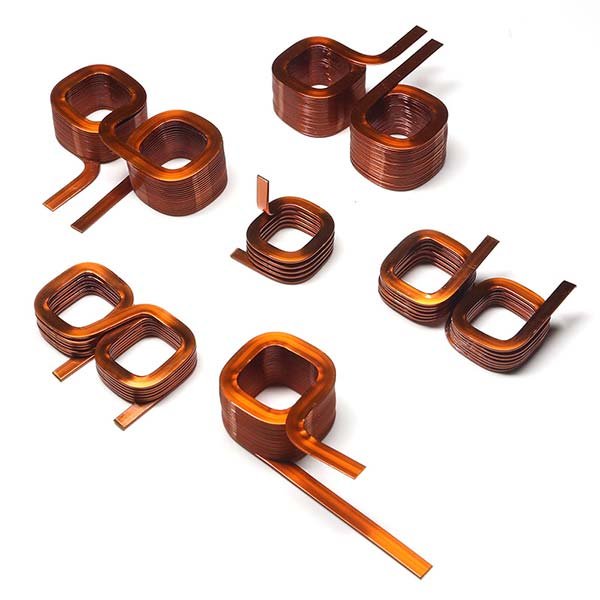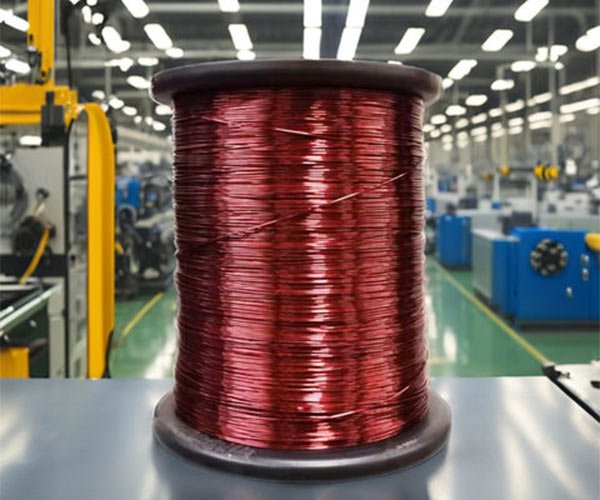Square coils are typically wound using various shapes of wire to create a nearly rectangular form. This “near-rectangular” design, with rounded corners on both the inner and outer edges, helps maintain continuity during winding and prevents damage to the wire’s coating. Square coils are widely used, particularly in the electroacoustic industry, such as in smartphone speakers, tablet speakers, and laptop speakers.
With over 15 years of experience in the winding industry, we have a deep understanding of coil and winding processes. We also have extensive experience in equipment development and tuning, enabling us to solve numerous winding challenges. The main issue with square coils lies in the four edges of the rectangle. During the winding process, there is no perpendicular force along the edges to direct the wire toward the center of the rectangle, so it relies solely on the wire’s own tension. This makes it challenging to keep the edges well-aligned, resulting in the edge thickness being significantly greater than that of the rounded corners after winding. This discrepancy can affect the coil’s dimensions and electrical conductivity. Raceway-shaped coils also have similar issues. In contrast, circular coils have a consistent force pointing toward the center during winding due to the contact points between the wire and the mold, resulting in tightly packed coils with high winding precision. This is a fundamental difference between circular and square coils.
Solutions for Square Coil Winding Challenges
There are two theoretical approaches to address these issues with square coils:
Inward Compression Method: This involves pressing inward on the edges of the square coil to make the thickness uniform. However, this method has challenges: if the winding is not perfectly aligned, pressing could damage the wire, resulting in defective products. Another approach is to press each layer individually, but this requires a more complex machine structure, leading to higher costs and reduced compatibility.
Outward Compression Method: In this method, a round or oval coil is wound first, with high winding precision and uniform thickness across all areas. The coil is then pressed outward from the inner edge using a mold to shape it into a square coil. This produces square coils with consistent thickness and conductive performance across all positions. However, this method is less effective for coils with many layers or significant thickness.
Advantages of Zhinghong Coils
We currently have specialized machines for square and raceway coils, which can be used to produce various precision coils. We warmly welcome you to visit and gain further insights into our capabilities.
The key advantages of Zhinghong Coils include:
Advanced Equipment and Precision: With a facility covering over ten thousand square meters, Zhinghong Coils operates nearly 100 automated production machines for inductive coils, all of which are fully automated Nichifu winding machines with a repeat precision of 0.001 mm, which few competitors can achieve.
Small Wire Diameter Capability: We can produce wires with diameters as small as 0.012 mm, a capability very few manufacturers in China possess.
Lean One-Piece Flow Production System: This system allows us to quickly identify and address quality issues in real time, ensuring efficient production.
High-Quality Materials: All raw materials come from well-known suppliers in the industry, including Elektrisola, Daihatsu Japan, and Sumitomo, ensuring premium wire quality.
Quality Assurance: We have achieved a “zero return” record for three consecutive years, earning our clients’ trust with superior quality.
Zhinghong Coils is dedicated to providing top-notch solutions for square coil production.
Need a customized coil?
Our experts for coils manufacturing will be pleased to advise you!



